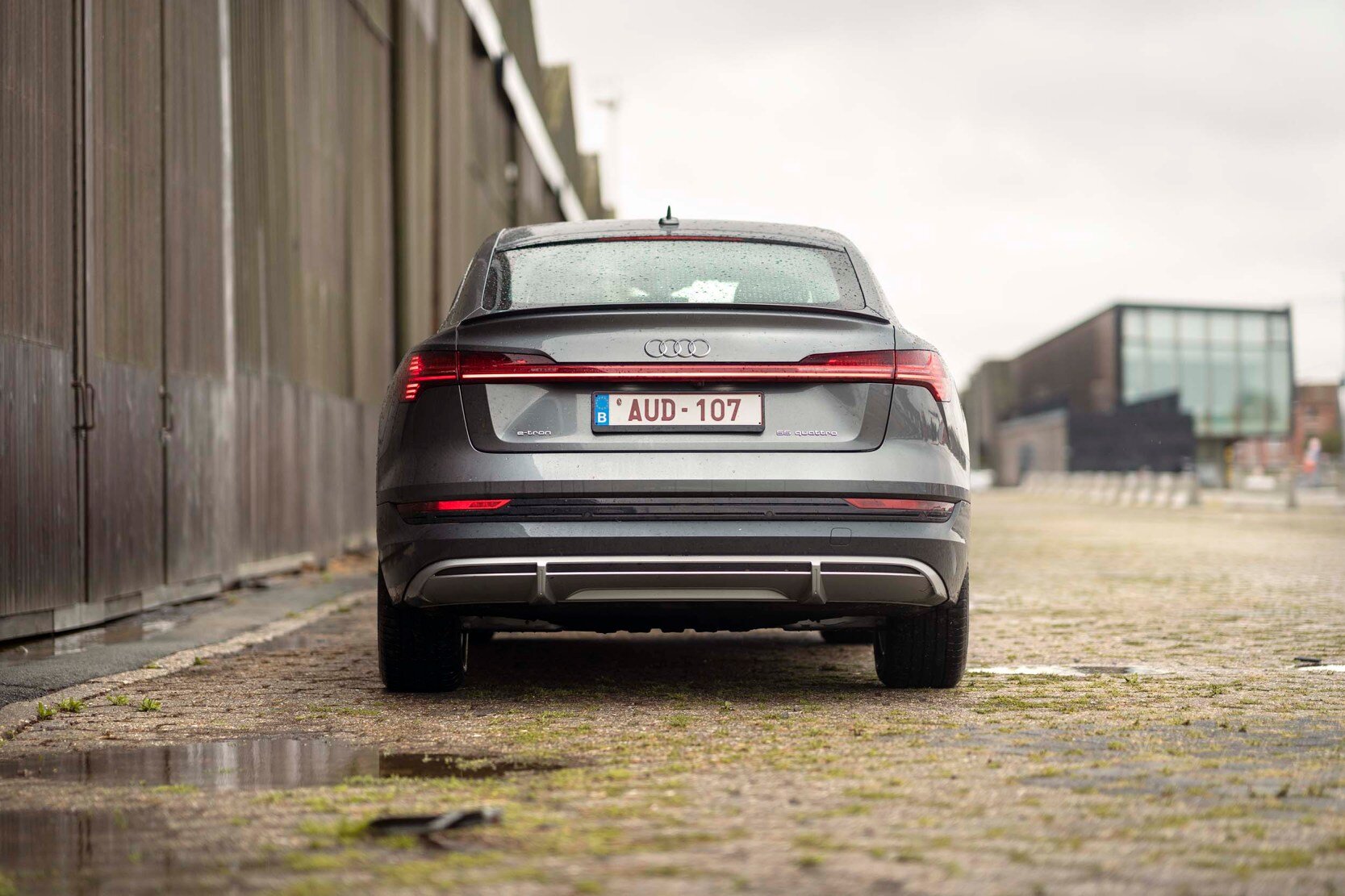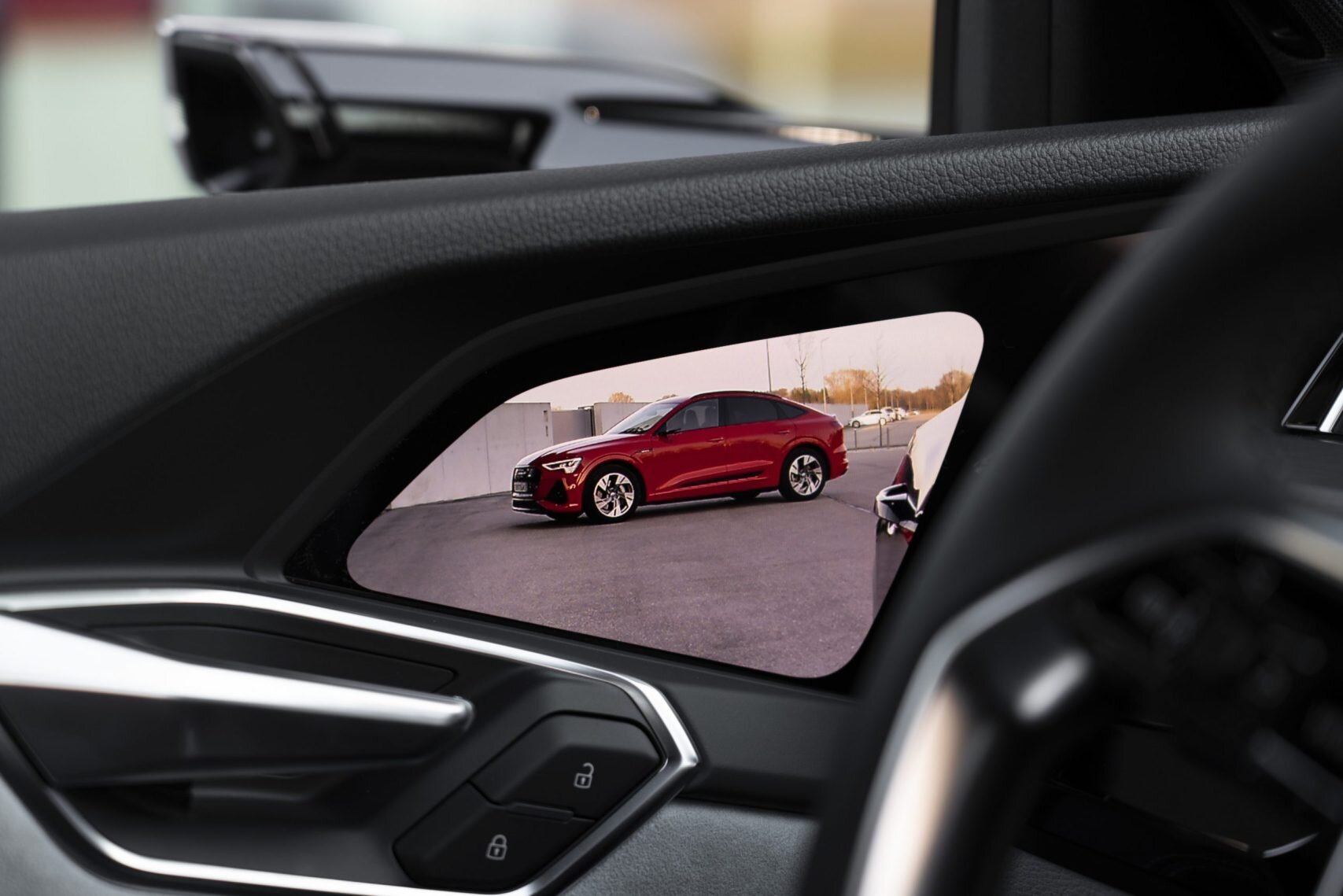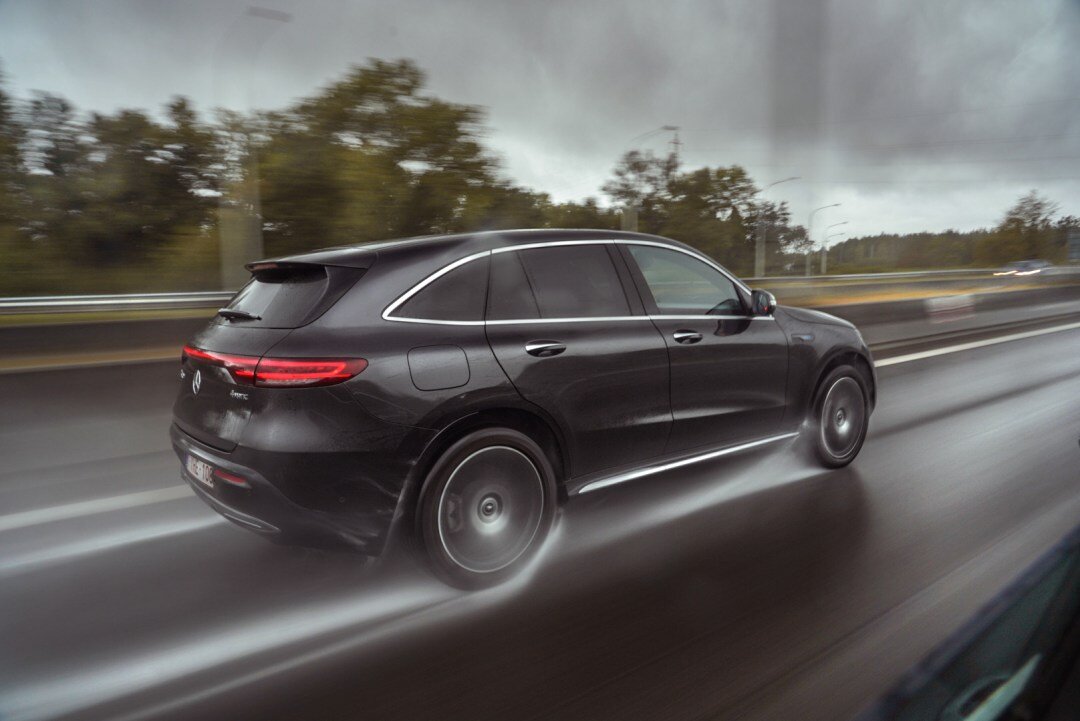E-Tron VS EQC: Battle Of The German Electrics
The Germans are now trying to take a piece of the EV cake but which attempt is the better one? E-Tron?EQC? We find out.
Since SUV’s are now selling like hot cakes, both Audi and Mercedes-Benz decided to opt for SU-EV’s as their first full-on attempt. They came out in the shape of the E-Tron and the EQC. And in this case, the E-Tron comes in the form of what Audi calls the Sportback.
Different sizes
The EQC is definitely the smaller car of the 2 with a length of 4762 mm compared to 4901 mm on the E-Tron. The E-Tron is wider too with 1935 mm compared to 1884 mm on the EQC.
Also in terms of looks, they are a different design language as well. The EQC is more smoothly shaped and round. Tron-like rear lights started becoming a trend but the EQC goes further and lights up the grille as well. It looks really cool and you’ll instantly recognize it as the EQC.
The E-Tron has a sharper and futuristic shape, there are a lot more lines highlighting the shape of the car and in typical Audi fashion. The lights are cool as ever. Plus the Digital LED Matrix lights bring the lighting game back up to a new level. Sadly, our car wasn’t fitted with this system.
Weirdly, however, even with this Coupé like roofline. The E-Tron offers a full 115 L of trunk space more than the 500L from the EQC. Something that proved worthwhile on our trip to IKEA.
Torque beasts
It looks like both brands made a deal where they would give their cars equal power since both produce 408 hp. However, they didn’t disclose towards each other how much torque the cars could make since the E-Tron has 664 Nm and the EQC a massive 760 Nm. And you can definitely feel that extra torque, which seems to unsettle the EQC from time to time. Still, the E-Tron’s torque figures are plenty enough for day to day use. And with an extra 60 kg compared to the EQC (even more with how fully loaded this E-Tron is), you’d better just back off at the stoplight. It only takes the EQC 5.1 seconds to 100 whilst the E-Tron will need 5.7 seconds.
However, if you keep your foot flat to the floor, you will catch the EQC since its top speed is limited to 180 km/h. The E-Tron will fly by up to 200 km/h. We know, we’re picturing a very realistic scenario here.
In terms of range, Audi seemed to be ahead of Mercedes-Benz. That doesn’t come down to the battery size though, but we’ll get to that in a bit. Audi stuffs a 95 kWh package in the E-Tron 55, Mercedes-Benz an 80 kWh collection of cells. A bigger battery should translate into more range, but the higher weight of the Audi pulls its range down. Effectively the EQC offered the same range as the Audi did with its bigger battery.
Thunder
Mercedes may offer a drivetrain that is more efficient, Audi has a trick up its sleeve that trumps the EQC in real-world use. How? Fast charging! The E-Tron manages to charge quickly all the way to 80%, with a current of 155 kW. Maxing out at 151 kW in our test, the EQC also only did this up to 40% (thanks for explaining FastNED). That high charge speed means a large Achilles heel has been tackled by Audi, making range anxiety a thing of the past. Now you’re just fearing about not having fast chargers around.
Whilst we had these two cars to compare, an autumn storm passed over Belgium. Hundred KPH wind gusts, more rain than with Katrina, and 9 degrees Celsius made for an interesting proving ground. Ward drove the EQC head-on into the wind during 30 minutes at a 130 KPH, making the consumption reach a massive 40 kW/100km. Sadly, we couldn’t put the Audi through the same test as the rain dissipated before we could try.
Interior comforts
The EQC is a unique blend of retro- and futuristic design. There’s no conservative version of the interior, which some mind find a letdown. Others might feel attracted to the recycled materials and ‘steampunk’ design though. Ward was one of the latter and couldn’t stop talking about the bronze vents. As with any Mercedes-Benz, there’s plenty of trims to go around. Our test car had the most restrained, non-AMG interior. Yet, it came with leather, electric, and heated seats. Mercedes-Benz offers a high level of equipment as a stand, with options being mostly aesthetically. What did seem odd was the cramped feeling the interior gave off, almost feeling like a smaller car than the C-Class. Head height seems smaller than expected too. Something that could be related to the size of the batteries sitting below.
The E-Tron here mixes high-tech functionality with some classic operating controls. The digital cockpit is straight forward and not too extensive in features whilst controlling everything through buttons that feel wonderfully tactile. No messing about with touch panels that question where you want to go with your finger.
The center console points very obviously to the driver which makes it easy to check during driving but also to operate. The only thing that does take a bit of getting used to is finding where all the settings reside inside the menus.
Other than that, the seats are amazing (I urge you to select the massage seats) our resident seating tester loved these and said she thought they were the nicest seats her derriere and spine have been graced with. Mood lighting is subtle and classy integrated.
Dynamics
Okay yeah, I know. We’re talking about 2.5 tonne SUVs here. And the weight of those cars is very apparent. However, thanks to the low center of gravity. It’s not as bad as you’d think.
The EQC launches you into your seat at any speed, the torque being debit to that. This sadly seems too much, as that momentum translates into a massive amount of kinetic energy now needing to be controlled. Don’t get me wrong, the body roll and predictability is on cue. It’s the feeling of 2.5 tonnes instantly launching to illegal speeds that make it feel sketchy. That much, that we enjoyed the “gas” response in ‘Comfort’ the most.
The E-Tron rides very smoothly on its adaptive air suspension and filters out nearly every bump or vibration on the road. It works nicely in Dynamic as well where it gives you a little more boost than you get in the other driving modes. Body roll is kept to a minimum thanks to the low center of gravity and the car rarely seems like it has any problems putting down the torque. And when you do drive it a little more dynamically without most of the nannies. It’ll give you a little tail action. Nothing too much because it finds grip again instantly but it’s a funny feeling in something of this weight.
Conclusion E-Tron EQC
The E-Tron and EQC are both formidable cars and on a very level playing field. The E-Tron is a little bigger justifying the price difference and in typical Audi fashion, you can go nuts with the options list. This one had 33.000 € in options which is what really set it apart.
Mercedes-Benz has created a very worthy first EV. Quick, effective, and with the quality worth of the label premium, Audi should cower at Mercedes-Benz their engineering excellence. Yet, Audi goes beyond just rational thought and Mercedes-Benz doesn’t with the EQC. There are no fancy wanna-haves like in the Audi, no sense of desire coming from the EQC. It’s too perfect. Too safe.
Audi offers more pleasant car, both in a rational and emotional way. Options to please every occupant and that fast charging, make it our favorite.
















